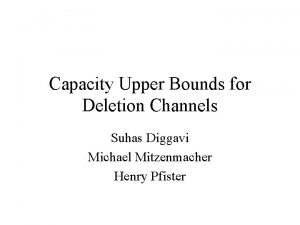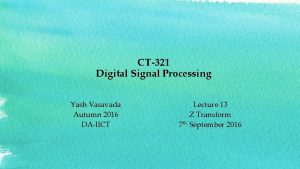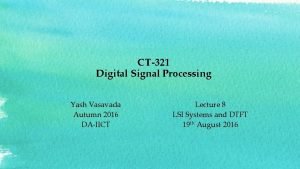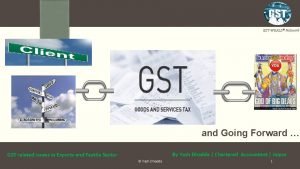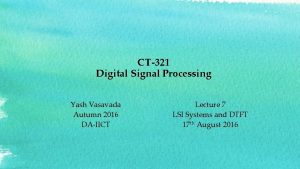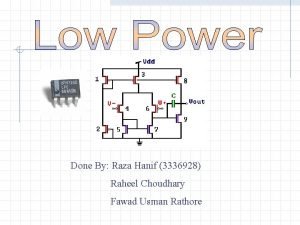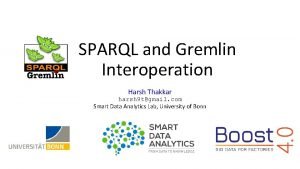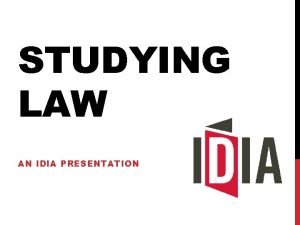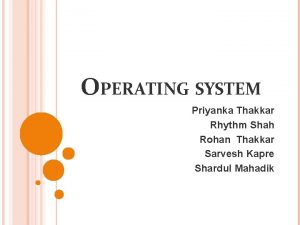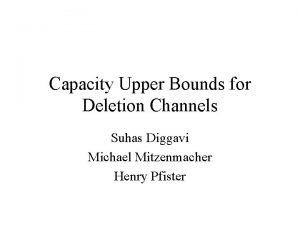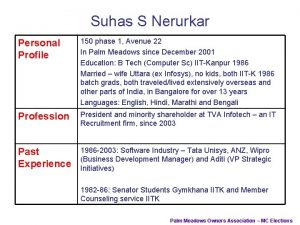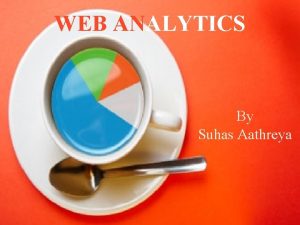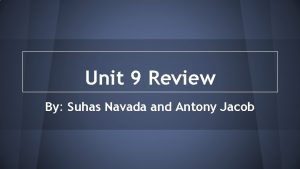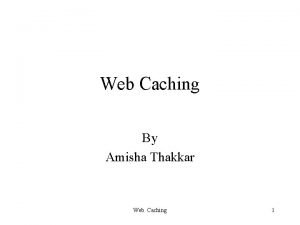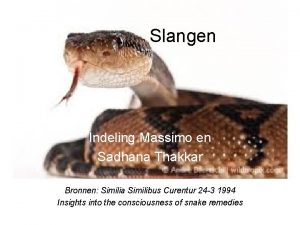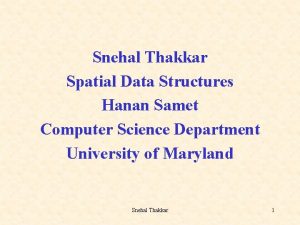Suhas Mallesh Yash Thakkar Ashok Choudhary August 9






















- Slides: 22

Suhas Mallesh Yash Thakkar Ashok Choudhary August 9 th, 2016 CIS 660 Data Mining and Big Data Processing -Dr. Sunnie S. Chung Classification Algorithms in Data Mining Deciding on the classification algorithms

Project Description Objective u Data u To pre-processing and transform the dataset to perform data mining. apply different algorithms to our dataset and predicting the result. u To evaluate the result obtained between different classifiers on given data set. Our project is based on the paper “Top 10 algorithms in data mining”. We will be implementing 5 of them with our data set.

What is classification algorithm ? The following are the algorithms that we will be implementing: u Decision Trees u C 5 u CART u Naïve Bayes u K-nearest neighbors u Support Vector Machine u Classification is a method to find that the given data set belongs to which class according to constraints. u Algorithm tries the possible combination of attributes on input data set to predict output data values. u Classification learning. is case of supervised

Decision Tree u Decision Notable decision tree algorithm include q. C. 5 q. CART tree learning uses a decision tree as a predictive model which maps observations about an item to conclusions about the item’s target value. u Tree models where the target variable can take a finite set of values are called classification trees.

Notable Decision Tree types u C 5. 0 : It constructs classifier on basis of decision tree, to generate data and can use discrete, continuous data. u It is supervised learning, because data set is labelled with classes. u To classify data, different species of data is tested using training data. u C 5. 0 is more popular because of its simple to read, and can be interpreted by anyone.

Notable Decision Tree types u CART: It stands for Classification & Regression Trees, as it outputs either classification or regression trees using learning trees. u It predicts continuous or numerous value. u It uses supervised learning technique to classify or regression trees. u It is quite fast and affordable too.

Comparing C 5. 0 & CART C 5. 0 CART u It u In u It uses information gain to classify. case of over-fitting it uses single – pass pruning process. u It can have 2 or more branches uses gini impurity for regression. uses cost-complexity pruning. u It has exactly 2 branches.

Our Dataset Once we have the dataset we will have to prepare the data for data mining. We will remove unwanted columns, perform normalization on selected columns and also data binning based on the type of attribute.

Implementing Decision tree algorithm C 5 for our Dataset u We will now calculate the Accuracy and Error rate for the C 5 as follows: u Accuracy = (True Positive + True Negative)/All u Error rate = 1 – Accuracy or (False Positive + False Negative)/All u Accuracy = 80. 72% u Error = (15091+1133) / 20100 = 0. 80965 rate = 1 – 0. 8072 = 0. 1928 = (606+3270)/20100 = 19. 28%

Implementing Decision tree algorithm CART for our Dataset u Accuracy u Error = (14932+1362) / 20100 = 0. 80965 = 81. 06% rate = 1 – 0. 8106 = 0. 1894 = (765+3041)/20100 = 19. 035%

Naive Bayes classifier u In machine learning, it is family of simple probabilistic classifiers based on applying Bayes' theorem with strong (naive) independence assumptions between the features. u Bayes theorem provides a way of calculating the posterior probability, P(c|x), from P(c), P(x), and P(x|c). Naive Bayes classifier assume that the effect of the value of a predictor (x) on a given class (c) is independent of the values of other predictors. This assumption is called class conditional independence.

Implementing Naïve Bayes algorithm to our Dataset We can note from the above output: u Accuracy = 80. 3% u Specificity = 96. 4% u Sensitivity = 24%

K-nearest neighbors In pattern recognition, the k-Nearest Neighbors algorithm is a nonparametric method used for classification and regression. The output depends on whether k-NN is used for classification or regression: u In k-NN classification, the output is a class membership. An object is classified by a majority vote of its neighbors, with the object being assigned to the class most common among its k nearest neighbors (k is a positive integer, typically small). If k = 1, then the object is simply assigned to the class of that single nearest neighbor. u In k-NN regression, the output is the property value for the object. This value is the average of the values of its k nearest neighbors.

Implementing K-nearest neighbors to our Dataset u We can see that by changing the k value we will get different accuracy and we can see that accuracy is good when k=11. u Accuracy 76. 85% u Error = (15329+118) / 20100 = rate = 1 – 0. 7685 = 0. 2315 = (4285+368)/20100 = 23. 15%

Support vector machine In machine learning, support vector machines are supervised learning models with associated learning algorithms that analyze data used for classification and regression analysis. An SVM training algorithm builds a model that assigns new examples into one category or the other, making it a non-probabilistic binary linear classifier. Application of SVM are as follows: u SVMs are helpful in text and hypertext categorization. u Classification of images can also be performed using SVMs. u Hand-written characters can be recognized using SVM. u The SVM algorithm has been widely applied in the biological and other sciences.

Implementing Support vector machine to our Dataset u We will now calculate the Accuracy and Error rate for the SVM as follows: u Accuracy = (15301+861) / 20100 = 0. 8040 = 80. 4% u Error rate = 1 – 0. 804 = 0. 196 = (3542+396)/20100 = 19. 6%

Receiver operating characteristic or ROC Curve In statistics, a receiver operating characteristic (ROC), or ROC curve, is a graphical plot that illustrates the performance of a binary classifier system as its discrimination threshold is varied. The curve is created by plotting the true positive rate (TPR) against the false positive rate (FPR) at various threshold settings.

Plotting ROC curve for the SVM Model predictions. u For a perfect classifier the ROC curve will go straight up the Y axis and then along the X axis. A classifier with no power will sit on the diagonal, whilst most classifiers fall somewhere in between. u From the plotted ROC curve we can see that performance of the SVM model is pretty good. u Also we find the Area Under Curve which is 73%

Other important Model Evaluation Techniques Bootstrapping u In statistics, bootstrapping can refer to any test or metric that relies on random sampling with replacement. u Bootstrapping allows assigning measures of accuracy. This technique allows estimation of the sampling distribution of almost any statistic using random sampling methods. Cross-validation u Cross-validation, sometimes called rotation estimation, is a model validation technique for assessing how the results of a statistical analysis will generalize to an independent data set. u It is mainly used in settings where the goal is prediction, and one wants to estimate how accurately a predictive model will perform in practice. u The goal of cross validation is to define a dataset to "test" the model in the training phase, in order to limit problems like overfitting.

Outliers once upon a time regarded as noisy data in statistics, has turned out to be an important problem which is being researched in diverse fields of research and application domains. In our dataset we can see that how many of them past their due dates and total payment due distribution with the help of boxplots. Boxplot for Payment due months Boxplot for Total Payment Due

Conclusion u For our dataset we got good prediction accuracy using CART and SVM. u With is. the help of ROC curve we evaluated how good is our model u Discussed on other important evaluation techniques and also on Outlier Analysis. u There are few other very good algorithms like Apriori which is more suitable for dataset with categorical attributes. u Choosing on the algorithm depends on the dataset and in our project we have shown how to use those in R and choose the best among them.

Thank You
 Suhas diggavi
Suhas diggavi Yash vasavada
Yash vasavada Yash desai
Yash desai Learning without burden was published in
Learning without burden was published in Yash vasavada
Yash vasavada Rashmi choudhary presenter
Rashmi choudhary presenter 998822 gst rate
998822 gst rate Yash vasavada
Yash vasavada Dr rashmi choudhary
Dr rashmi choudhary Raheel choudhary
Raheel choudhary Dr anil choudhary
Dr anil choudhary Raheel choudhary
Raheel choudhary Dr nayan thakkar
Dr nayan thakkar Lekhan thakkar
Lekhan thakkar Kinnarry thakkar
Kinnarry thakkar Nayan thakkar
Nayan thakkar Simran thakkar
Simran thakkar Dr raj thakkar
Dr raj thakkar Lekhan thakkar
Lekhan thakkar Devraj thakkar
Devraj thakkar Vishal thakkar nose
Vishal thakkar nose Dr hardik thakkar
Dr hardik thakkar Donnie ashok
Donnie ashok
